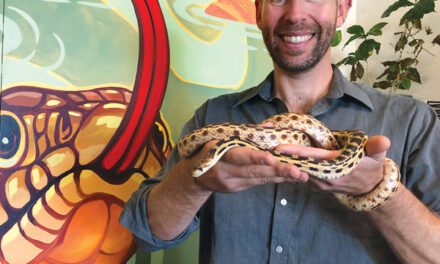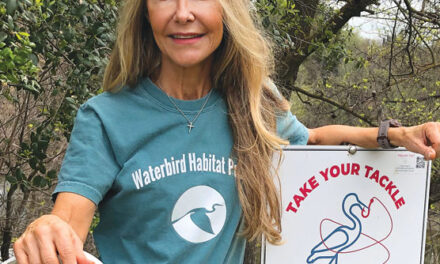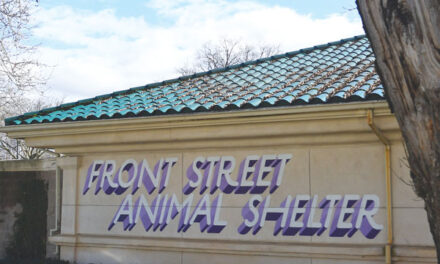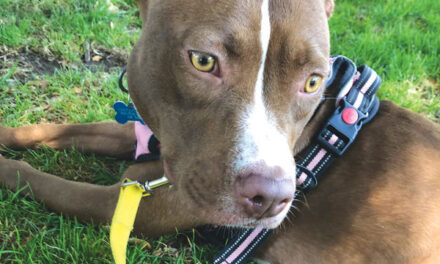A dog with no microchip, no ID tag. A door left open or a hole in the fence. Someone willing to do the right thing—get the dog off the street.
Now what? Is taking the lost canine to a local animal shelter the best way to reunite him with his owner? Is that where he will be safe? Is that where his parents will look first?
Or is it better to hold onto the dog, place signs around the neighborhood, post photos on social media, walk door to door?
Phillip Zimmerman, manager of the city’s Front Street Animal Shelter, likes the second option. So much so that he has instituted a “managed intake” policy at Front Street.
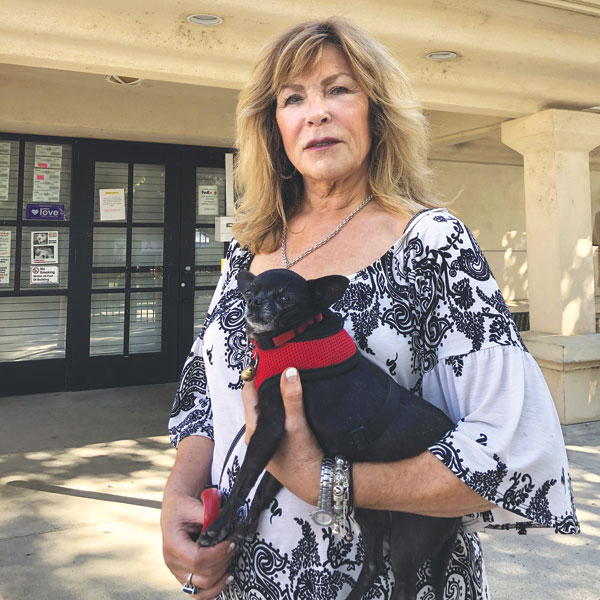
Municipal animal shelters (city and county shelters that receive government funds) are “open admission” facilities, accepting most stray dogs and cats without question.
Under Zimmerman’s approach, the fewer animals going into the shelter, the better.
“We try to catch them before they get here,” says Zimmerman, who joined Front Street at the end of 2019. “If someone finds an animal in their neighborhood, we’ll have a conversation with them. Have you posted the animal on Nextdoor? Have you posted the animal on a Facebook group? Have you checked with any of your neighbors?”
“Community sheltering” is a model Zimmerman has embraced since he shut down Front Street in 2020 due to COVID-19. The shelter accepts ill and injured animals, but encourages community sheltering for healthy stray dogs.
“The shelter is a scary place. If somebody found my animal, I would much rather it be in somebody’s home than in the scary shelter,” Zimmerman says.
But not everyone agrees. A group of local animal advocates has launched a “Fix Front Street” Facebook page to reestablish the city’s essential animal services. The group’s leaders want Front Street back to pre-Zimmerman days, exposing problems with the community sheltering mandate and the shelter’s appointment-only services, among other issues.
“He’s not saving more. He’s just not accepting more,” says Elyse Mize with Fix Front Street and Sacramento Lost and Found Pets. Mize launched Fix Front Street with longtime local animal advocate Julie Virga.
Instead of limiting intake, the shelter should be doing more to safely and effectively move animals out. “Is everything being done to help release animals from Front Street? The answer is no,” Virga says.
According to Fix Front Street, the shelter is falling short on transferring animals into foster care, promoting available pets on social media, reaching out to the numerous in- and out-of-state rescue organizations, providing adequate veterinary care to make animals more adoptable, and the all-important spaying and neutering to reduce intake in the first place.
Attorney Hilary Bagley Franzoia is a Fix Front Street advocate who headed up the Sacramento County District Attorney’s Animal Cruelty Unit and Animal Cruelty Task Force. She says Front Street is following a trendy model that places the onus of caring for abandoned animals on community members rather than public officials whose job is to provide safe and reliable care.
“Any shelter professional who advocates turning away healthy, unaltered, unwanted, lost, stray animals—knowing that inevitably they will be returned to streets—is incompetent,” Bagley Franzoia says.
If the animal does not enter the shelter, will the pet be altered, vaccinated, flea treated, groomed, socialized and ultimately placed in a loving home?
In the 2020-2021 state budget, Gov. Gavin Newsom allocated $50 million to make California a “no kill” state. The goal: No adoptable or treatable dog or cat should be euthanized.
The funding was assigned to the UC Davis Koret Shelter Medicine Program, which promotes shelters staying within their “capacity of care” by encouraging community sheltering to reduce the number of animals taken in. Decreasing intake decreases euthanasia.
“Any modern shelter should be operating within its capacity of care,” Zimmerman says. “I was flabbergasted the day I walked in and saw how many animals were being housed at the shelter. Three and four large dogs to a kennel. Taking in every animal with no questions asked is not good for the animals.”
Zimmerman says keeping animals out of the shelter takes a multifaceted approach, including educating the community on how to get stray dogs back home and providing financial resources to low-income pet owners who would otherwise have to surrender their animals.
“People are inherently good and they want to do the right thing,” Zimmerman says. “Whether it’s through us or people doing it on their own.”
Bagley Franzoia has prosecuted crime in Sacramento County for 30 years, including animal abuse. She doesn’t buy Zimmerman’s argument. “While the manager has denied the prevalence of cruelty and neglect to stray animals, it remains rampant,” she says.
“Shelters are supposed to be safe havens for animals who have nowhere else to go,” Virga says. “When shelters close, many animals are abandoned on the streets, where they starve, suffer, are injured or killed. Many remain in the hands of people who abuse, mistreat, neglect or even kill them.”
Sure, shelters—public and private—are not ideal for any animal, especially the timid or easily frightened. But they don’t have to be. With caring staff and dedicated volunteers, shelters can and should be places of refuge for lost, stray and abandoned pets. That’s why we call them shelters.
Cathryn Rakich can be reached at crakich@surewest.net. Follow us on Facebook, Twitter and Instagram: @insidesacramento.




